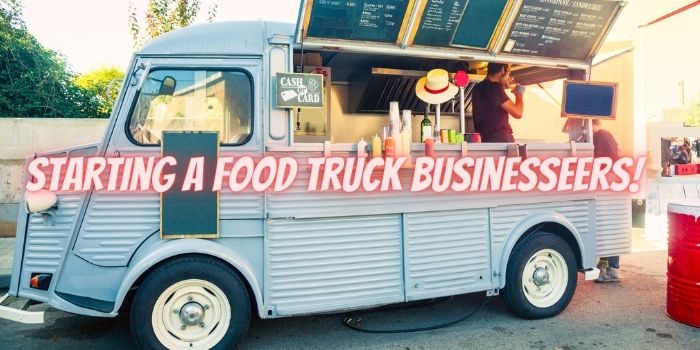Step 1: Get a license.
Unfortunately, you can’t just start selling food out of a truck without investigating the proper licenses, and if you aren’t careful, you may find yourself with a fine. Take some time to research the necessary certificates you need, including those from your state health department, parking permits, and truck permits. Each city will have its own rules, but you should be able to find someone in your local government to speak to about information you need. Some cities like New York put a cap on the number of permits given out each year, for example, and others will have restrictions on where you can park.
Step 2: Get a truck or cart.
Your approach here will depend on your budget, but there are a few options available. If you have a smaller budget, then a food cart could be the right place to start, with costs starting at around $2000. If you have some seed money, you may be able to purchase a food truck from the start, but it may still be worth experimenting with a smaller operation until you know that there’s a demand for your food.
The next step is to look for a used food truck, which could cost you between $20,000 and $50,000. There are several websites where you can look for used food trucks, so be patient and understand the market to get a good deal. If money isn’t a problem, you may want to get a new or even custom-built concession trailer, which you can create from the ground up to have the exact specifications inside that you need to provide your customers with the best experience possible.
Step 3: Find your niche.
With the mobile food market blowing up, basic sandwiches or cheap burgers won’t cut it anymore. Customers are looking for more exciting food such as gourmet meals, quick healthy alternatives, and food from other countries. The best way to compete is to find a niche that’s not yet appropriately filled, and then, create the best version of that food possible, so that you’re the ‘go-to’ person.
Step 4: Sort your financing.
With a plan in place, you’ll most likely need some start-up capital. With a financial plan, you may be able to find an owner-financing option, or if not, you can look for other capital sources. Getting a loan from a bank or a business-specific loan may be another good option, but be cautious of the interest you’ll have to pay back. Alternatively, you may be able to borrow from friends and family.
Step 5: Make your plan.
Before starting anything, it’s always essential to create a business plan detailing your decisions and having a financial projection showing how you’ll make money. Add in every cost you can think of, from insurance to cleaning profits, and work out how many meals you’ll need to sell to make a profit. This will give you a clear idea of how viable your plan is.
Step 6: Arrange your insurance.
Unfortunately, having a food truck comes with high insurance costs as you’ll have your office on wheels. Make sure to book a meeting with an insurance agent, ideally one who has experience in the food truck industry, and explain exactly how your truck will operate. They should provide you with guidance on the insurance you need, so you’re fully covered, but not overpaying.
Step 7: Make sure you have parking.
You may not realize it until you’ve purchased your truck that they are large machines, and you’ll need to store it somewhere! If you don’t have a garage huge enough, you’ll need to find out if your neighborhood will park it on the street. You may be able to find a private parking space as a solution to this.
Step 8: Get networking.
One of the most profitable ways to operate as a food trucker is to book events that you exclusively cater to. It means you’re the leading food provider for all people there, and you may be able to get paid upfront per person attending. You can start with simple word of mouth, and then, begin marketing your business to get the word out.
Step 9: Start building on social media.
One of the best ways to get your brand out there is through social media. If you’re at an event, try to have some professional photos of your food being prepped, and encourage people to like your page if they show an interest in what you’re making. As your following grows, post regular updates on where you’ll be and use engaging content like competitions to increase the number of people liking your content.
Step 10: Plan for growth.
Now that you have one food truck being regularly booked, it’s time to start thinking about expanding. With only one truck, you’re limited to a certain number of events you can work, but if you can invest in a second and third truck, you can be in multiple places at once with staff running each truck. You may be able to start selling merch and build a real brand that people will follow to get more of your food! Your imagination is the only limit to your business, so you should start to think big! Physical locations may be another way to expand further and build your food empire.




